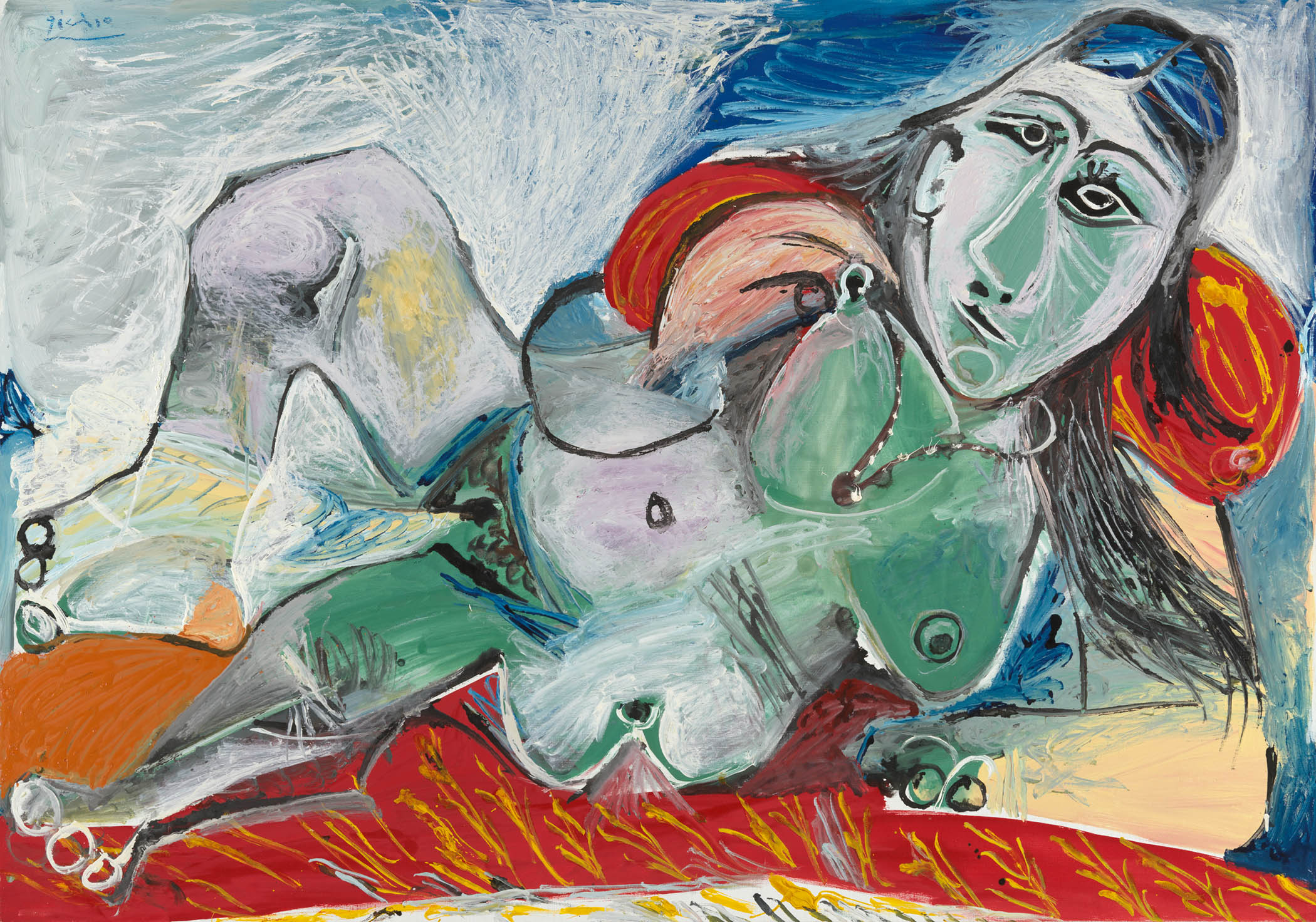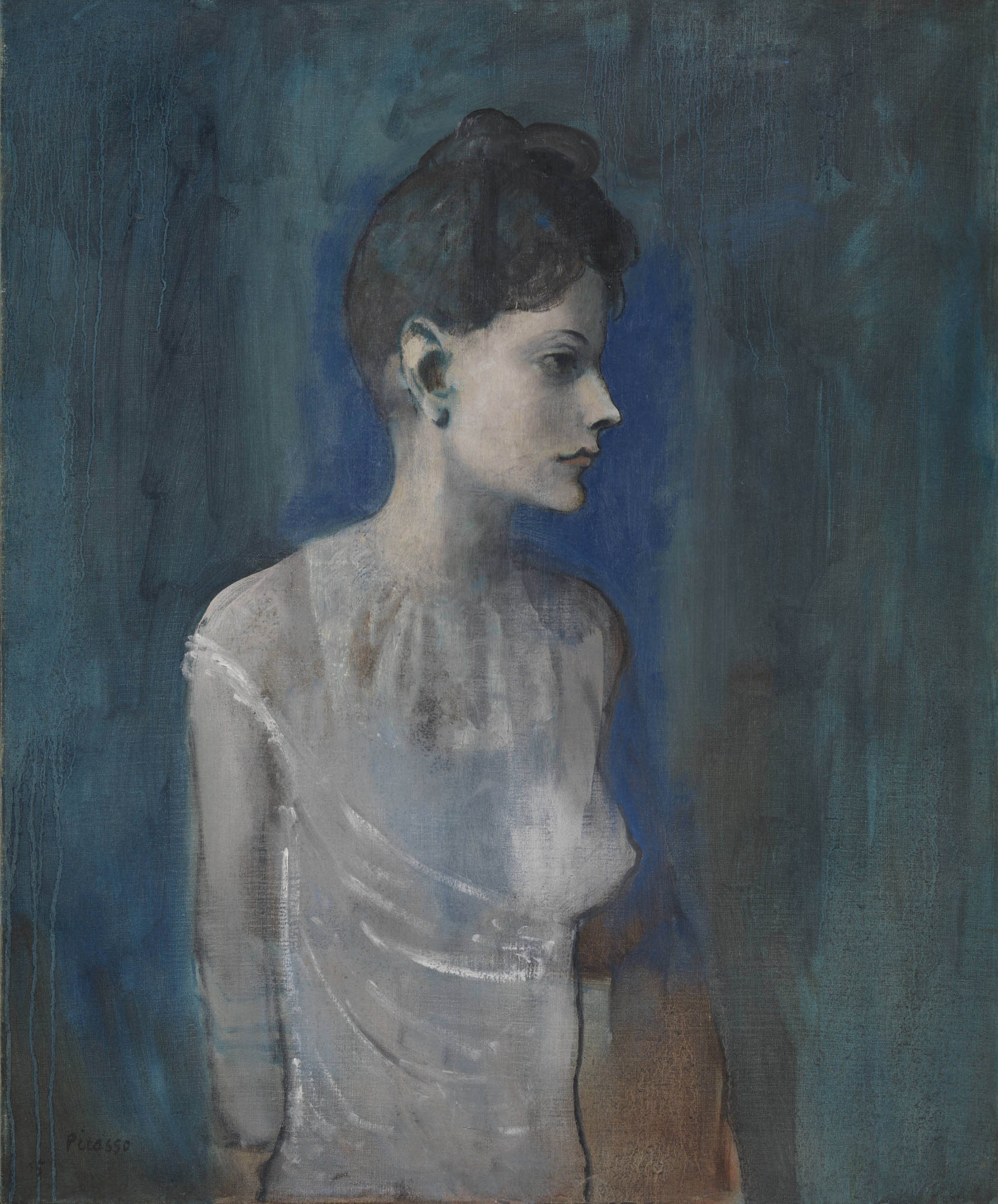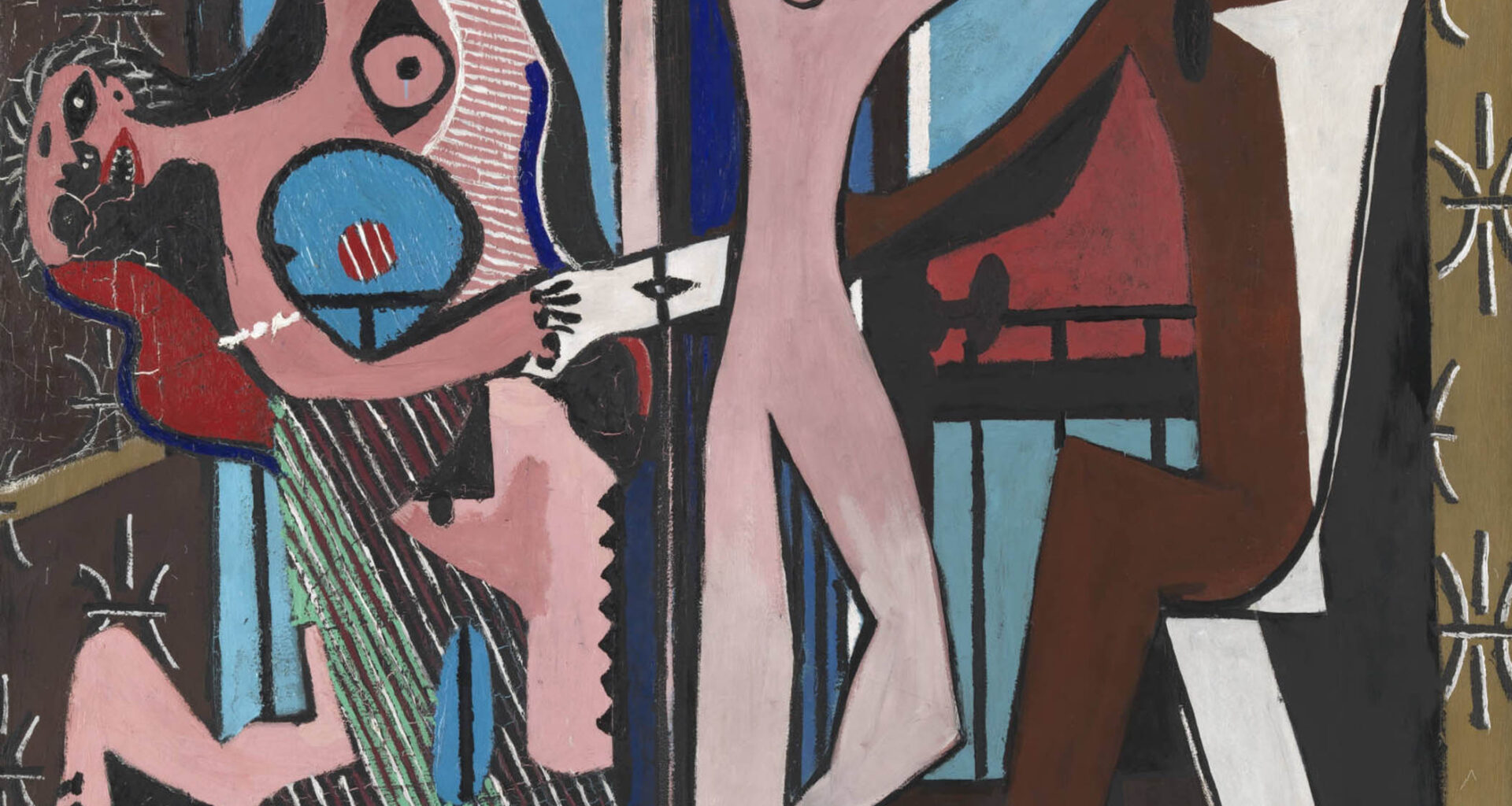You enter through the wings, all plywood struts and suspenseful darkness. Picasso himself makes a sudden appearance on screen. He is playing the role of Carmen in a lace mantilla, the twinkle in his eyes exactly matched by the flare as he lights a cigarette. What a good girl he makes.
Round the corner, the main production is further deferred. Sixteen of his stupendous images of young lovers, pensive women and goatish old men are mounted on mesh grids like posters at Ikea. The sorrowful Girl in a Chemise, from the end of the Blue Period, is jammed down one end with instructions to hold your phone to the QR code and learn how Picasso turned a boy into a girl, as if artists never changed their minds. But this goes to the curatorial claim that the artist was fascinated by “non-conforming bodies”.
Another corner and you are hit, in the darkness, by his fierce and lustful Nude Woman With Necklace, from 1968, with all its graphic rhymes – nipples and eyes, jewels, naval and vulva. Picasso was in his mid-80s when he went at this canvas, with its raw red and arsenical green palette, and had long since asserted that “painting is stronger than me; it makes me do what it wants”. He was only performing its will. That, at least, was one of his dramatic declarations – along with the warning that nobody could interpret his mind or dreams through the work.

The ‘fierce and lustful’ Nude Woman With Necklace, 1968
Theatre Picasso is not a show about Picasso and theatre, heavens no – despite all the dutiful photographs of his stage sets, costume designs and paper puppets, his collaborations with Ballets Russes, even programmes for his awful play Desire Caught By the Tail. Nor is it about Picasso as performer, though more than an hour of Henri-Georges Clouzot’s famous 1956 film The Mystery of Picasso – where the artist creates art in real time for the cameras – is screened on a loop. No, it is apparently about Picasso and performativity, according to the opaque and jargon-clogged catalogue, which inevitably wants to make him into our non-conforming contemporary.
So it is partly concerned with presentation. A shot of Picasso’s own display of his paintings propped on chairs (c 1901) gets attention, though given the works sit below just as many mounted on the wall, it suggests he is simply trying to pack them in. Another of him wearing one of his papier-mache bull heads links straight to the constant theme of bullfighters, flamenco dancers and artists’ models that runs through his art and this show.
Picasso’s art muscles its way into your mind with astonishing vigour. He does not need to be updated for a new generation
For though the curators – the artist Wu Tsang and the writer Enrique Fuenteblanca – may have all kinds of ideas about how to “stage” Picasso, they still have to show his actual works. Early cubism, with fragments of Le Figaro intercut with bistro table ellipses; prints of old blokes staring – like painters – at nubile sex workers in brothels; the magnificent painting of his very young lover Marie-Thérèse Walter, all arabesques and curlicues, holding her own bosomy beauty together. Two kissing profiles unite in her heart-shaped face, one glowing with the bewitching lavender blue of moonlight.
Picasso’s cruelty to women is problematic for any curator; whole shows have been brilliantly devoted to this subject as well as to his portraits, his relationship with the old masters or Matisse (in this very museum). But Theatre Picasso swipes left in avoidance. So The Weeping Woman, from 1937, has nothing to do with Picasso, the Spanish civil war context, let alone the absolute outlandishness of the image itself, but merely the unrecognisable model: scan the code and you can learn “Seven Things About Dora Maar”.
It might be argued that this muddled yet sententious presentation does not matter. And sure enough, for all the theatrical darkness, the spotlights, clattering music and surging voices, the wings, ramps and footlights, there are some perfectly conventional sections. The same old groupings occur – women, the studio, the model and the painter (as harlequin, bullfighter, minotaur). Every one of the 45 or so works, bar a tapestry, belongs to Tate Modern (and exhibited here for £15); if only they were always shown together.

The sorrowful Girl in a Chemise, 1905, is ‘jammed down one end’ of the gallery with an accompanying QR code
But what does matter is the way you come across a painting (or miss one altogether). Here is a serious dilemma. The show manoeuvres you through corridors, wings and antechambers towards a ramp that leads down to a brightly lit gallery. This is supposed to represent the stalls. The idea is that viewers will suddenly find themselves in the audience, turn and look back at where they have come from and in so doing set eyes upon the stage, as it were, where The Three Dancers (hitherto invisible) is displayed.
It is the centenary of that mysterious painting, with its trio of forever-linked figures in a raucous jostle of pink, blue and brown, the balcony behind them with its one open window. The figure on the right casts such a dark and eerie silhouette. The figure on the left has a deadly little head. It feels as if they are locked in this hectic performance like the figures in Poussin’s A Dance to the Music of Time – a terrible never-ending roundelay.
But presented like this, hidden until the very end, when you turn back and see it – or don’t – the scene is like a jubilant, all-together-now, hands-in-the-air finale.
Picasso’s art muscles its way into your mind with astonishing vigour. He does not need to be updated for a new generation. Theatre Picasso certainly shows just how strong he looks against a black wall, but the best of this contrived and contradictory presentation, which turns out to be surprisingly cramped, is of course the art. Strike the set.
Theatre Picasso is at Tate Modern, London, until 12 April 2026
Photographs by Succession Picasso/DACS

